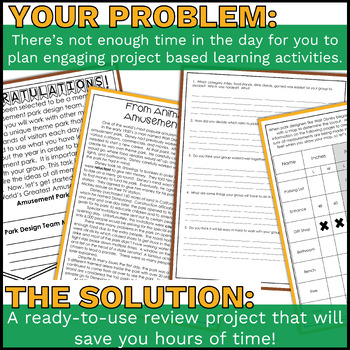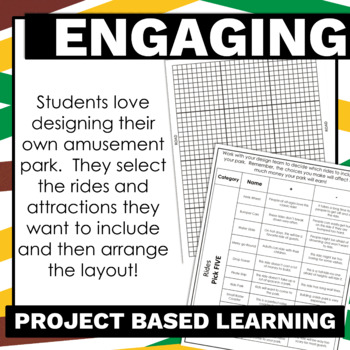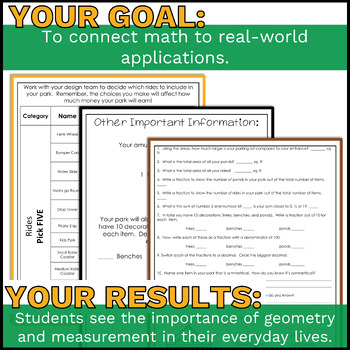4th Grade Math Review Activity Geometry and Measurement Project Based Learning
- PDF
- Easel Activity
What educators are saying
Description
Students will love designing their own amusement park with this 4th grade math review packet. This is a fun and engaging math review project that will allow your students to review geometry, measurement and data and fraction skills. In this project based learning activity, students will read a comprehension passage, design an amusement park and complete math review activities. This is the perfect unit to use before end-of-year testing, since it is a great way to review all of the fourth grade math skills your students have learned!
・゛゛・。 Don't miss out on new products & sales! Click here to follow Giraffic Jam on TPT! 。・゛゛・
・・・・・・・・・・・・・・・・・・・・・
・・ A B O U T・ T H I S・ R E S O U R C E・・
・・・・・・・・・・・・・・・・・・・・・
What is the focus of this product?
- Cumulative Project
- Project based learning
- Apply fractions geometry and measurement skills previously learned
What makes this product unique?
- Highly rigorous
- Requires reading, writing and math
- Students must persevere through challenging tasks
- Great for enrichment activities
What do the students have to do?
- First, students read a one page selection about a famous park designer and answer questions.
- Then, students decide what elements they would like in their park.
- Next, students design their park layout (this is always their favorite part!).
- Finally, they will complete math calculations on their park.
What kinds of skills are being used?
- Measuring angles
- Determining area
- Identifying fractions
- Parallel/Perpendicular lines
- and much more!
How long will this product take students to complete?
- I recommend at least one week.
- Students will need time to think through each step of the project.
What is included in my purchase?
- A one page background sheet providing information about a famous amusement park designer
- Corresponding questions to the text
- Information on the park requirements, including think sheets of which elements to include
- Graph paper to lay out the park
- Higher level thinking questions based on 4th grade math standards
- Reflection sheets
Is there an answer key?
- There is no answer key.
- No two parks will ever be the same!
・・・・・・・・・・・・・・・・・・・・・
・・・・・ I S ・I T・ E D I T A B L E ?・・・・
・・・・・・・・・・・・・・・・・・・・・
- No, this resource is not editable. This includes, but is not limited to:
- Fonts and Text
- Images and Layout
- Please email me at giraffic.jam.tpt@gmail.com or by using the "Ask A Question" feature on TPT if you have any questions.
・・・・・・・・・・・・・・・・・・・・・
・O T H E R・ G R E A T・ R E S O U R C E S・
・・・・・・・・・・・・・・・・・・・・・
・・・・・・・・・・・・・・・・・・・・・
・・・・・ D I D ・Y O U・K N O W ?・・・・
・・・・・・・・・・・・・・・・・・・・・
When you leave feedback on resources you've purchased, you earn credits to get free products on TPT!






